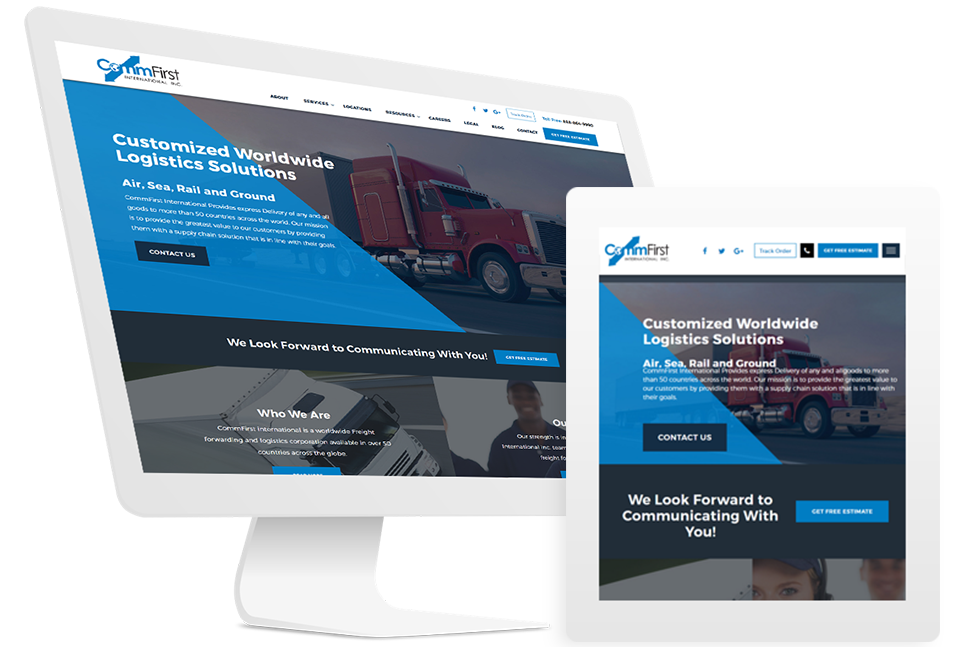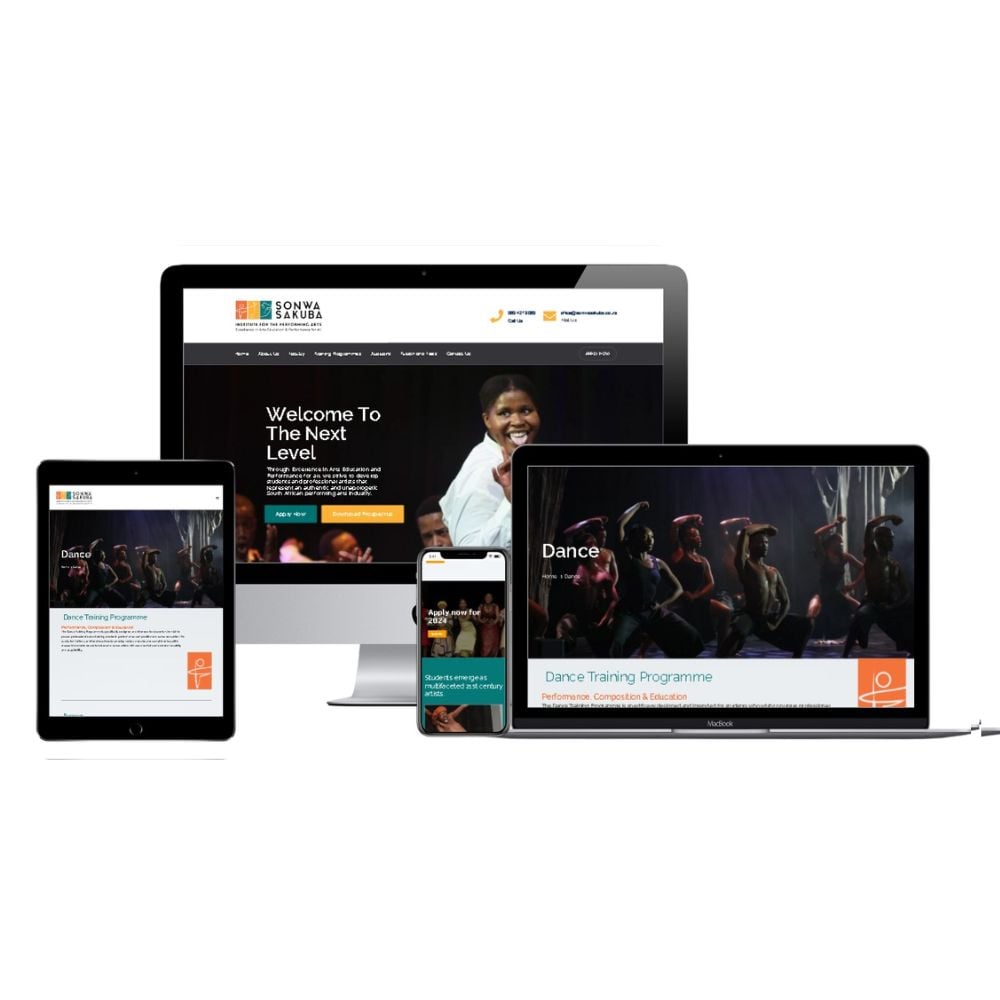How to Improve Your Website Design for Better Conversion Rates
How to Improve Your Website Design for Better Conversion Rates
Blog Article
Modern Web Site Style That Records Attention and Transforms
In a significantly digital landscape, modern web site layout has arised as a critical factor in capturing individual interest and driving conversions. As we discover these vital elements, it ends up being clear that recognizing their interplay can significantly impact a site's performance and individual contentment.
Importance of Visual Power Structure
Aesthetic power structure is an essential element in website layout, as it overviews customers' focus and improves their overall experience. By purposefully organizing content, developers can route individuals to one of the most essential details initially, consequently boosting interaction and enhancing usability. Reliable aesthetic power structure utilizes various strategies, consisting of size, shade, spacing, and contrast. Bigger aspects naturally attract the eye, while contrasting colors can emphasize crucial messages, making them stick out among more restrained elements.
Incorporating a sensible flow in material setup is necessary; as an example, putting one of the most critical details at the top of a page promotes prompt acknowledgment. In addition, consistent use typography, such as differing font sizes and designs, aids establish a clear web content framework. This company not just aids in navigating yet also builds depend on, as users feel a lot more comfy when they can conveniently locate what they are searching for.
Eventually, a well-executed aesthetic power structure not only boosts aesthetic appeal but also dramatically impacts individual habits. By prioritizing crucial elements and guaranteeing a seamless experience, designers can effectively convert visitors into consumers, strengthening the importance of this fundamental layout concept in modern website growth.
Responsive Layout for All Instruments
Creating a seamless experience throughout numerous gadgets is crucial in today's digital landscape, where users access websites from desktop computers, smart devices, and tablet computers alike. Responsive style is a vital method that guarantees sites adapt fluidly to various screen resolutions, alignments, and dimensions. By utilizing versatile grids, images, and CSS media queries, designers can produce layouts that preserve aesthetic integrity and capability, no matter the tool being used.
The significance of receptive design prolongs past looks; it straight affects customer involvement and conversion prices. A web site that operates well on all gadgets urges longer gos to and minimizes bounce rates, as customers are more probable to interact with content that is very easy to navigate. Furthermore, online search engine, particularly Google, focus on mobile-friendly sites in their rankings, making responsive design a vital part of search engine optimization (SEARCH ENGINE OPTIMIZATION)
Including receptive design not only improves customer experience however also simplifies the development process. By creating a solitary site that functions throughout tools, organizations can conserve time and resources compared to creating different mobile and desktop variations. Eventually, responsive layout is a basic technique for modern-day website design, ensuring availability and fulfillment for all individuals, regardless of their device.
Engaging Interactive Components
While a receptive design lays the foundation for a practical web site, integrating interesting interactive elements is critical for recording user interest and promoting deeper connections. Website Design. Interactive elements, such as animations, quizzes, and clickable infographics, develop an extra dynamic user experience, urging visitors to spend even more time on the site
Integrating interactive functions can also lead customers via complex details, making it less complicated to digest content. Interactive sliders can show item variants, while ingrained videos can give demos or testimonies that reverberate even more than fixed pictures or message. Gamification methods, pop over to this site like rewards for engaging or finishing tasks with web content, can improve user inspiration and retention.
Effective use of interactive aspects not just enriches the user experience but can also lead to higher conversion prices. It is important to balance interactivity with performance; excessively intricate features may hinder website rate, adversely affecting user complete satisfaction.
Streamlined Navigation Practices
Effective navigation is a cornerstone of any successful website, as it directly influences user experience and web content access. Structured navigating methods guarantee that users can conveniently find info, improving their interaction with the website. A well-structured navigating food selection need to be intuitive and simple, commonly including a limited variety of main classifications to prevent overwhelming site visitors.
To accomplish streamlined navigating, designers need to focus on an ordered structure that logically arranges material. Implementing breadcrumb trails can offer users with context concerning their present place within the site, enabling seamless backtracking. In addition, making use of drop-down food selections click for info can successfully conserve area while still giving access to subcategories.
Responsive style is essential, as navigating must be practical across all gadgets (Website Design). Mobile users, in specific, gain from touch-friendly menus and collapsible areas that maintain functionality without compromising aesthetic appeals

Effective Call-to-Action Techniques
A well-crafted call-to-action (CTA) is essential for leading users towards wanted end results on a site, as it urges them to engage with material or buy. To optimize their performance, CTAs ought to be clear, engaging, and strategically put throughout the site.
First, utilize action-oriented language that communicates seriousness or worth, such as "Start," "Sign up with Now," or "Insurance claim Your Price cut." This language not only inspires users but likewise establishes clear expectations regarding the next actions.
Second, think about layout elements; CTAs ought to stand apart aesthetically via contrasting shades, ample whitespace, and popular positioning. A switch that is easy to see and click rises the possibility of individual communication.
In addition, customizing CTAs based upon customer behavior or demographics can considerably improve involvement. Tailored messages resonate much more with users, driving higher conversion rates.

Verdict
To conclude, modern-day website style highlights the integration of visual hierarchy, receptive layouts, engaging interactive aspects, structured navigation, and efficient call-to-action approaches. These components collectively enhance user experience, making certain that site visitors remain engaged and motivated to explore material better. By focusing on these layout concepts, companies can considerably boost customer retention and conversion prices, inevitably bring about better success in the digital landscape. The continual advancement of internet layout highlights its essential function in reliable on the internet communication and advertising and marketing.
In a progressively digital landscape, modern-day web site design has emerged as a crucial aspect in recording customer focus and driving conversions.Aesthetic pecking order is a vital aspect in website layout, as it overviews users' attention and enhances their total experience.The significance of responsive style extends past visual appeals; it directly influences individual involvement and conversion rates.Integrating responsive layout not just improves customer experience however additionally enhances the advancement process. Eventually, responsive style is a fundamental approach for modern-day site layout, guaranteeing access and contentment for all customers, no matter of their tool.
Report this page